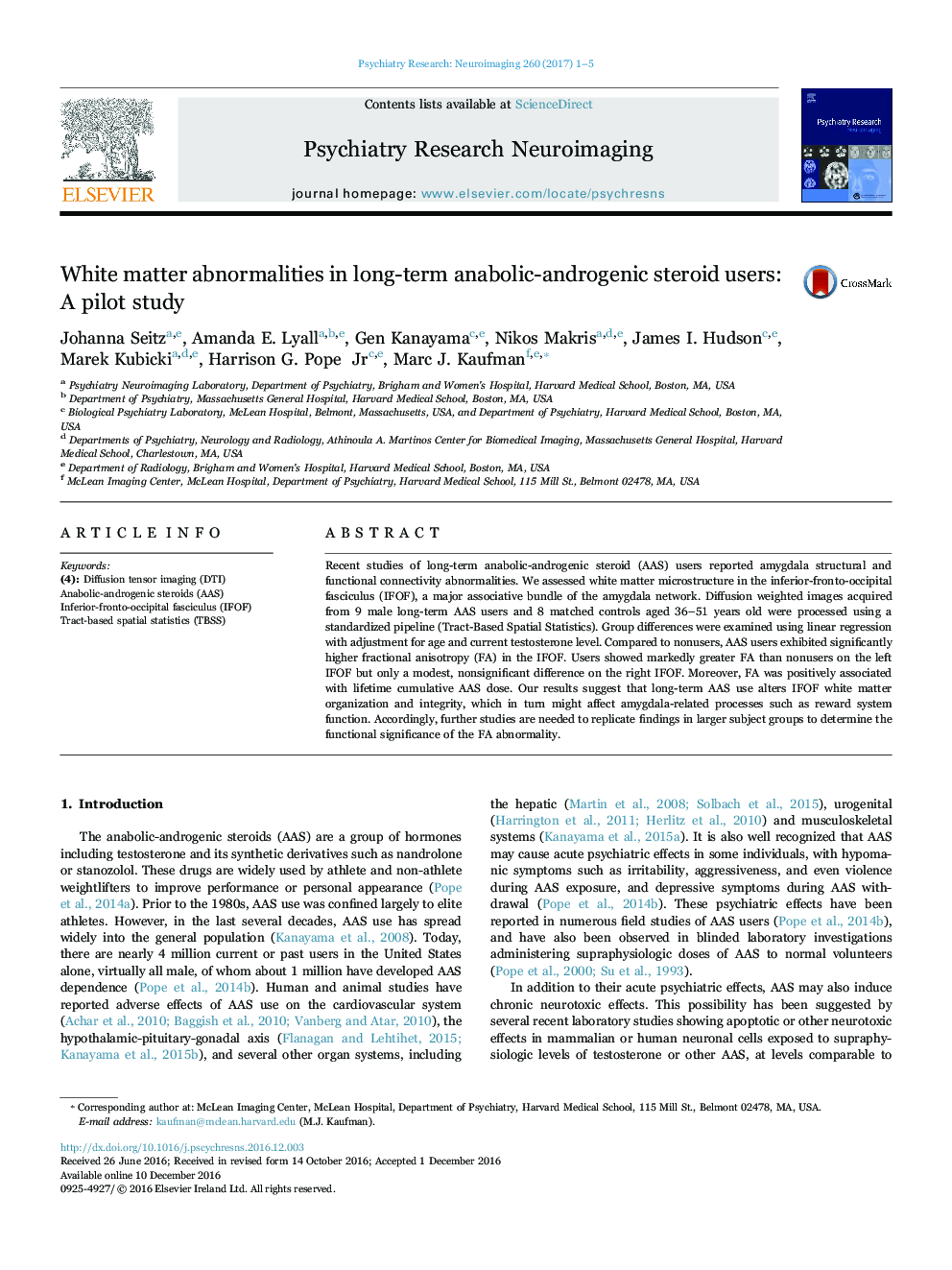| Article ID | Journal | Published Year | Pages | File Type |
|---|---|---|---|---|
| 4934018 | Psychiatry Research: Neuroimaging | 2017 | 5 Pages |
Abstract
Recent studies of long-term anabolic-androgenic steroid (AAS) users reported amygdala structural and functional connectivity abnormalities. We assessed white matter microstructure in the inferior-fronto-occipital fasciculus (IFOF), a major associative bundle of the amygdala network. Diffusion weighted images acquired from 9 male long-term AAS users and 8 matched controls aged 36-51 years old were processed using a standardized pipeline (Tract-Based Spatial Statistics). Group differences were examined using linear regression with adjustment for age and current testosterone level. Compared to nonusers, AAS users exhibited significantly higher fractional anisotropy (FA) in the IFOF. Users showed markedly greater FA than nonusers on the left IFOF but only a modest, nonsignificant difference on the right IFOF. Moreover, FA was positively associated with lifetime cumulative AAS dose. Our results suggest that long-term AAS use alters IFOF white matter organization and integrity, which in turn might affect amygdala-related processes such as reward system function. Accordingly, further studies are needed to replicate findings in larger subject groups to determine the functional significance of the FA abnormality.
Related Topics
Life Sciences
Neuroscience
Biological Psychiatry
Authors
Johanna Seitz, Amanda E. Lyall, Gen Kanayama, Nikos Makris, James I. Hudson, Marek Kubicki, Harrison G. Jr, Marc J. Kaufman,
